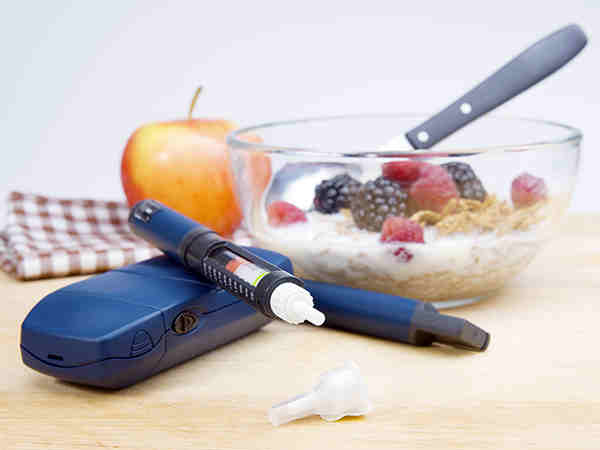
Eating Right with Diabetes
Jill Kohn, MS, RDN, LDN
Published April 30, 2015
More than 29 million Americans live with diabetes, both diagnosed and undiagnosed. Changing eating habits can be the most challenging aspect of diabetes self-management, but diabetes is manageable.
Managing diabetes means maintaining healthy blood sugar levels. Along with proper medication and physical activity, this also requires balancing the foods you eat.
- Eat a variety of foods. Choose foods from each food group every day, and don't be afraid to try new foods.
- Make half your plate fruits and vegetables. Fruit contains fiber, vitamins and minerals and can satisfy your sweet tooth. Include more non-starchy vegetables including leafy greens, asparagus, carrots and broccoli each day. Also, choose whole fruit more often and juice less often.
- Choose healthy carbohydrates. Increase the amount of fiber you consume by eating at least half of all grains as whole-grain foods each day. Brown rice, buckwheat, oatmeal, whole-wheat breads and cereals are good sources of fiber.
- Eat less fat. Choose lean meats, poultry and fish whenever possible. Bake, broil, roast, grill, boil or steam foods instead of frying. Also, choose low-fat or fat-free dairy products.
- Cut the salt. Use less salt and more pepper, herbs and seasoning. Eating less salt helps control high blood pressure.
- Avoid skipping meals. Skipping meals can make you more hungry, moody and unable to focus. Learn what works best for you. Some people like three meals a day, while others enjoy two meals and two snacks. Find an eating pattern that is healthy for you and stick with it.
- Focus on your food. Pick one place to sit down and eat at home. Eating while doing other things may lead to eating more than you think. Also, switching from a large plate to a smaller one may help you feel satisfied with reduced portions.
- Watch portions to manage your calorie intake. Keep a record of what you eat and drink, including the amounts. Also, get in the habit of weighing or measuring food portions at least a couple of times a month.